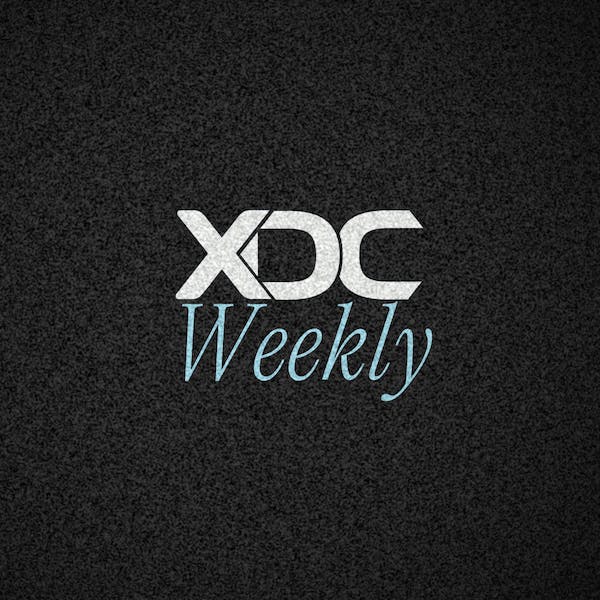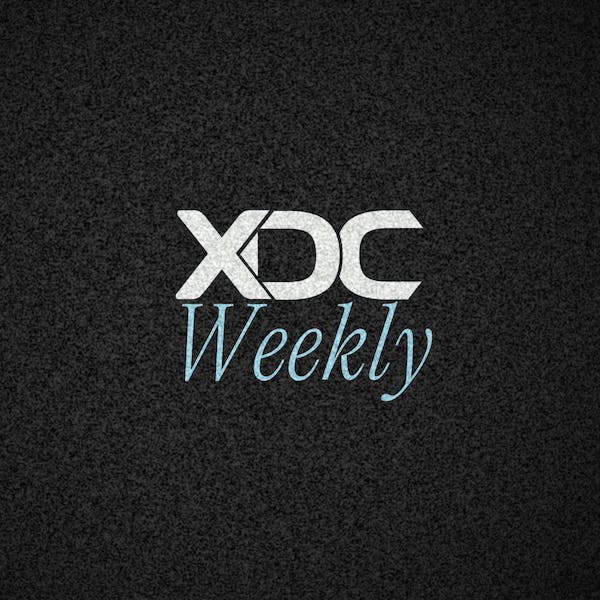When the XDC Network launched in June 2019, the primary focus was on providing scalable and efficient alternatives to Ethereum that could support enterprise-grade blockchain applications. Over the past five years, the landscape of EVM-compatible layer-one blockchains has expanded significantly, offering numerous solutions for these needs. As the industry has evolved, new challenges and opportunities have emerged, prompting the XDC Network to innovate and adapt continuously.
Today, the XDC Network is at the forefront of advancing blockchain technology, introducing a range of new features and upgrades to meet the demands of an ever-changing blockchain landscape and the industries adopting it. Among the most significant advancements coming is the highly anticipated consensus upgrade. While its excitement is warranted, there are many other exciting developments worthy of discussion that we will cover.

XDC Network Upgrade
XDC 2.0
The biggest update coming is obviously the anticipated consensus upgrade for the XDC Network. Currently running on Apothem (testnet), XDC 2.0 brings remarkable performance improvements with equally ambitious security upgrades. This upgrade not only makes the XDC Network one of the most secure and best performing blockchains but solidifies its place amongst the most trusted. Upgrades of note include a three block finality, byzantine fault tolerant consensus, and on-chain forensics that prevent rogue nodes from attacking the network. However, there are many other updates coming with the consensus upgrade that will make significant impacts on advancing the XDC Network forward. Audits for XDC 2.0 have concluded and its findings are being addressed then tested before launching on mainnet in October.
Subnets
In addition to the consensus engine upgrade will be the launch of subnets to the XDC Network mainnet. This technology allows users to deploy a permissioned blockchain tailored to their specific needs, with sovereignty over data and similar performance to the mainnet. The architecture includes components like a custom-configured subnet manager, subnet generator, cross-chain messaging and interoperability between subnets and the mainnet, and much more. XDC Network Subnets will open new opportunities and enable support for a diverse range of use cases across multiple industries.
Subnets will go live on mainnet around the same time as the consensus engine upgrade. With their release will come a line of tools and infrastructure that enables users to use subnets full potential. We will cover this infrastructure and provide sources throughout the article.
Optimizing Network Fees
The XDC Network currently has some of the lowest gas fees in the industry which has made it a favorable place to build. While maintaining very low gas fees may seem like an obvious thing, there are effects beyond the affordability of transactions that must be considered, such as security and network performance. A modest increase in network gas fees will be implemented in parallel with the consensus upgrade. Yet, even with the increase the XDC Network will maintain its position amongst the most affordable places to build. We can expect this update to be implemented with the mainnet consensus upgrade.
Subnet Manager UI
The Subnet Manager will allow users to easily manage and monitor their subnets through a user interface. The tool will have three main features including a homepage for subnet details and basic management actions, confirmation checker for transactions, and subnet manager for settings and configurations. You can view more information about the subnet manager in the documentation.
Subnet Generator
The XDC Subnet Generator streamlines the deployment of XDC Network subnets by generating the necessary configuration files and Docker images. Many of the subnet components are supported with the tool, including validator nodes, boot nodes, and upgradable smart contracts like the Checkpoint Smart Contract (CSC). Users can also customize their subnet’s parameters, such as consensus mechanisms, node count, and gas fee structures, ensuring a tailored blockchain environment for specific use cases.
Development of the subnet generator is complete and will be available when the subnets launch on the mainnet. It will continue to receive updates as new features and functions are developed for the subnets. More information can be found here.
XDC Zero
This technology will enable subnets and the XDC Network to achieve a new level of interoperability by providing cross-chain data transmission and validation. Its four primary features include an oracle, endpoint, relayer, and front end UI manager.
Oracle - Ensures the integrity of data between the source and target blockchains.
Endpoint - Provides cross-chain communication through dispatching and receiving data packets that undergo a validation process to certify authenticity.
Relayer - Relayers will be used to extract payload data from the source chain’s endpoint and deliver it.
Frontend UI - The front end user interface will make the user experience of managing endpoints for participating blockchains much easier. Users can view entities already onboarded with their current endpoint and onboard new chain entities, allowing an easier cross-chain management experience within the XDC Network and subnet ecosystem.
Overall, XDC Zero provides the infrastructure for cross-chain capabilities across subnets. The introduction of a user interface makes it easier for users to leverage XDC Zero and enable their subnets potential. Most of the development is complete and will be live with subnets shortly after the consensus upgrade. Read more about XDC Zero here.
Subswap
While XDC Zero provides all the cross-chain capabilities, Subswap allows you to use them. Subswap provides a cross-chain dApp that uses XDC Zero’s infrastructure for a secure asset transfer and swapping experience. A more detailed description of Subswap has been written by one of its developers here and its release can be expected with XDC Zero.
USDC Bridge with Circle
Bridging USDC to the XDC Network represents a significant milestone in expanding the ecosystem's reach and capabilities. Bridge development is nearly complete and will undergo a thorough review from the Circle team before its release to ensure a secure and trusted solution. Functioning as a standalone platform with its own user interface, user experience should be simple and easy. This initiative will not only increase liquidity substantially, it will also unlock new opportunities for decentralized finance (DeFi) applications, tokenized assets, and many others. With development nearly complete, testing and review by the Circle team will begin. We can expect this to be live some time in Q4 of this year.
USDT Bridge with Tether
Similar to the development of the USDC bridge with Circle will be a bridged USDT with Tether. This solution is in its early stage compared to USDC, but development will begin soon. Users will benefit from a secure and trusted solution that provides a user friendly experience. The addition of bridged USDT will increase liquidity and open a wide range of opportunities across the ecosystem. With this solution being in its early stages, a release will come after the launch of bridged USDC.
Node Enhancements & Network Updates
XDC Network is set to receive a series of updates and enhancements following the consensus upgrade move to mainnet. These updates will roll out over a six to nine month period and focus on improving smart contract execution, optimizing node performance, and boosting overall network efficiency.
1. Implement generic LRU (Least Recently Used) Cache & replace Bigcache with Fastcache
By implementing a generic LRU (Least Recently Used) cache mechanism and replacing Bigcache with Fastcache, the update will significantly improve memory management and data retrieval speed. This combination ensures that only the most recently accessed data remains in cache, reducing memory usage, lowering latency, and preventing potential bottlenecks, leading to overall better node performance.
2. Reduce receipt size
Optimizing the size of transaction receipts will increase network efficiency by minimizing the amount of data handled by nodes.
3. Optimized Transaction Signatures with EIP-191 and EIP-712
Implementing these EIPs will standardize the methods of signing transactions on the XDC Network. EIP 191 defines a way to prefix data for off-chain messaging before it is signed, creating a clear distinction between on-chain and off-chain transaction signatures. EIP-712 provides a clear data structure in human readable format that makes it easier for users to understand what they are signing.
4. EIP-3541
Reserves bytecode to be used in the future for enhancements and functionality updates, preventing conflicts with existing smart contracts as updates are introduced.
5. EIP-3860
Limits the size of initcode to prevent excessively large smart contracts from being deployed, sustaining an efficient level of network performance.
6. EIP-2681
Caps the amount of blocks that can be skipped by validators, ensuring validators cannot excessively delay block production. Although the XDC Network benefits from fast transaction speeds and efficiency, being proactive is crucial for stability and security.
7. v0.8.24, v0.8.25, & v0.8.26 Solidity Updates
Adding support for newer versions of Solidity provides the latest features and enhancements in smart contract development on the XDC Network. With this update, the XDC Network will be compatible with the latest version of Solidity.
8. Support for Pebble
Pebble provides nodes the ability to write quickly and handle high loads of writing, and even improves read performance. This will allow nodes to efficiently access data, validate transactions, and even improve smart contract execution. Overall, Pebble will improve latency under high demand.
9. Improve tracer
A tracer is used to monitor, analyze, and debug the execution of transactions and smart contracts. This is a vital tool for on-chain analysis, auditing, transparency, and insight. An explorer is one example of a tool that leverages a tracer and could see improved functionality with these improvements.
10. EIP-1559 Compatibility
EIP-1559 was an essential implementation for Ethereum that improved its gas fee payment process for users. Although the XDC Network is inherently scalable and efficient, making it less reliant on mechanisms like EIP-1559, it is important to remain compatible with services that interact with Ethereum and other EVM-compatible blockchains. To ensure compatibility, support for EIP-1559 related RPC methods will be implemented to minimize errors when interacting with the XDC Network.
Now that we have reviewed what's coming to the XDC Network, let's take a look at a few of the releases we witnessed so far this year.
XDCDAO
The launch of XDCDAO marked a major milestone in offering a decentralized governance framework for empowering the community to influence the network's direction.
Account Abstraction
Account abstraction opens new possibilities for interacting with blockchain technology. Traditionally, users are limited to simple capabilities such as signing transactions and transferring assets. This limits the ability to perform more complex and automated tasks, requiring the use of additional smart contracts and off-chain services. With account abstraction, user accounts can be managed by smart contracts instead of being directly tied to a private key. Development by Etherspot is complete and live on mainnet.
Solidity Update to v0.8.23
This marked another step towards enhancing the XDC Networks smart contract capabilities and compatibility. More updates are coming and will be covered later in this article.
XDC Network AI Assistant
CodeRun AI is a developer assistant powered by the XDC Network. It can be used for technical and strategic guidance, as well as smart contract development.
For more than five years, the XDC Network has provided a trusted and reliable blockchain for trade finance solutions, tokenization, and many other applications. This has not only been an accomplishment itself but an opportunity to understand the technology demands of developers, an evolving blockchain industry, and the industries using it. The updates and enhancements outlined here represent more than improvements; they represent the network's ability to meet those technology demands and solidify its competitive edge in the industry.
Not only is a new consensus engine being delivered, but a collection of upgrades that improve the overall experience of using the XDC Network will be included. Imagine deploying your own blockchain with the XDC Network’s level of performance? While that is an incredible feature itself, the ability to interoperate and grow beyond that creates new opportunities and exciting possibilities. New and emerging initiatives wanting to use blockchain technology will have years of innovation at their disposal and the tools to use it, inviting a new wave of participants to the growing XDC ecosystem. As the XDC Network continues to evolve, it is clear that the XDC Network is on a trajectory to becoming one of the top blockchain technologies globally.
Go here to learn more about building on the XDC Network.


